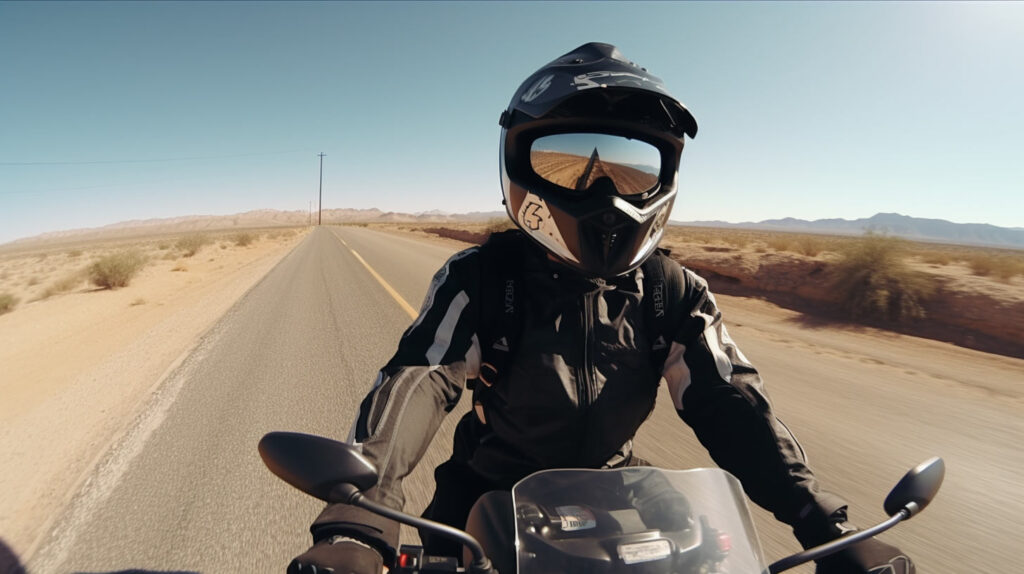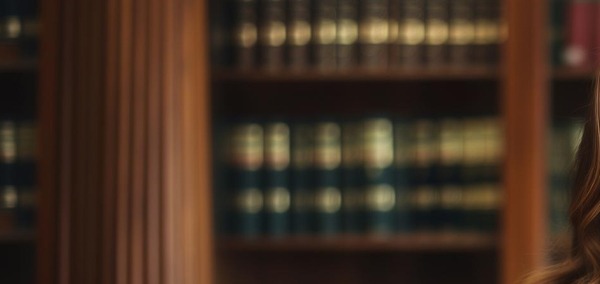Being in a motorcycle accident can be a terrifying ordeal, made more confusing if you’re unfamiliar with Nevada’s complex legal system. If you ride in Las Vegas, having video evidence from a helmet camera could be invaluable for your accident claim. However, using footage appropriately involves navigating issues around privacy, admissibility, and technical factors that skilled legal guidance can help address.
| Key Take-Aways | |
|---|---|
| ️ Benefits for Claims | Captures crash visuals, establishing facts and fault. Counters misconceptions. Bolsters injury compensation claims. |
| ⚖️ Legal Considerations | Admissibility, privacy, and evidence handling protocols are complex. Regional laws also apply. Requires legal guidance. |
| ️♂️ Analyzing Footage | Trained lawyers collaborate with video forensics experts to analyze negligence factors, assign comparative fault percentages based on laws and calculate speeds, distances vehicles traveled before crash etc.. |
| Securing Camera & Footage | Carefully store original SD card and camera after a crash. Copy footage safely before external review to prevent data loss. |
| ️ Your Rights | Sharing footage risks reputation damage and privacy violations if raw video enters public domain. Instead provide attorney-supervised insurer access to factual extractions. |
| Settlement Negotiations | Early strategic consultation, even before insurance sees potential liability footage allows protecting your interests and recovery amount. |
| Admissibility in Court | Helmet camera film faces extensive evidentiary scrutiny before admission. Veteran regional counsels enhance court success prospects. |
| When to Call an Attorney | Evaluate need for legal guidance based on factors like crash injuries, disputes liability disputes, experiencing meager settlement offers or needing help managing video evidence. |
With over 40 years representing injured bikers in Nevada, veteran attorney Jack Bernstein understands the unique role helmet cameras now play in determining fault after motorcycle crashes. This article will examine key considerations around using helmet camera footage to support accident claims, as well as when legal representation from an expert like Jack may be needed to fully leverage video evidence while protecting your rights.
Determining Fault and Liability
Assessing who was at fault and responsible for a motorcycle accident is crucial. Police and insurance companies make liability judgements that impact your injury claim and compensation. Without evidence of what truly happened, you risk unfair blame or doubt about your case.
The most vital evidence types that influence liability findings include:
- Police Report: Notes officer’s judgement of fault based on scene observations.
- Witness Statements: Provide additional perspectives on the crash.
- Skid Marks & Vehicle Damage: Indicates collisions and party at fault.
- Medical Records: Documents injuries incurred by each party.
Among newer forms of evidence, helmet camera footage offers unique value for liability:
- Shows precise pre-crash actions of you and other parties.
- Provides visual context around factors like weather, lighting, road conditions.
- Documents potential negligence like speeding, texting, recklessness.
- Counters misconceptions about bikers’ potential fault.
Still, footage must align with other evidence like police reports and medical records to make your strongest case. An experienced attorney examines liability factors in totality when advising your options.
Benefits of Helmet Cams
Visual Evidence of the Accident
Helmet camera footage provides irrefutable visual proof of how an accident occurred from a motorcyclist’s perspective. This shows:
- Exact pre-crash actions of vehicles involved.
- Road hazards, weather conditions, or other environmental factors.
- Whether other parties were potentially negligent (texting, speeding etc.).
Unlike witness recollections or police reports, objective video documents the incident to support your recollection and claim.
Identifying Fault and Negligence
Footage helps precisely determine each party’s fault by visually establishing:
- Which vehicle impacted the other first.
- Unsafe driving actions like lane deviations.
- Any negligence like distraction or impairment.
Expert analysis of the video can even calculate speeds and conditions leading up to the crash.
Countering Misconceptions about Motorcyclists
Unfair assumptions often paint motorcyclists as reckless risk-takers. But footage can prove:
- You were driving safely and lawfully.
- Others violated traffic laws or safety.
- Environmental factors like road hazards were beyond your control.
Rather than assumptions, video documents objective truth about how all parties acted.
Maximizing Chances of Compensation
With clear visual evidence and expert corroboration, helmet camera footage maximizes the potential value of your injury claim by:
- Strengthening evidence of compensable damages.
- Minimizing doubt about your account.
- Countering unfair blame about your role.
Skilled legal analysis of video evidence can make a major impact in settlement negotiations.
Key Legal Considerations
Helmet cameras can profoundly strengthen motorcycle accident claims. However, injured riders must navigate crucial legal considerations when seeking to admit and leverage such footage in an injury case.
Evidentiary Admissibility
Unlike eyewitnesses or police reports, video evidence requires meeting strict admissibility standards before courts allow it as evidence. Helmet camera footage specifically faces scrutiny around relevance to the case, authenticity safeguards, and chain of custody documentation. Experienced attorneys understand these evidentiary rules in detail to ensure submitted footage withstands judicial and insurance scrutiny alike.
Privacy & Ethical Concerns
Recording bike rides also risks violating individuals’ reasonable privacy expectations if footage reveals private property or conversations. Ethical riders should avoid such situations and blur identifiable faces of unrelated bystanders. Local laws also govern helmet camera usage; legal experts can outline appropriate protocols that balance evidentiary needs with privacy.
Preserving Video Integrity
Carefully preserving helmet camera footage in an untampered original state and creating authenticated copies is vital. Allegations of edits, deletions or mishandling can otherwise derail its court admissibility and evidential value. Meticulously documenting all storage and handling also fends off spoliation claims.
Using Helmet Camera Footage
With helmet camera footage’s rising evidentiary importance, properly managing video content protects bikers’ interests across negotiations, litigation, and more.
When to Inform Legal Counsel
After securing original footage, immediately inform your attorney to strategize usage. Analysis may reveal footage that wholly or partially exonerates you from liability assumptions. Alternatively, it may show partial culpability warranting early settlement discussions before insurers view it.
Professionally Analyzing Footage
Experienced counsel adeptly break down helmet camera content to inform case strategy, including:
- Pinpointing negligence evident in other parties’ actions based on traffic laws.
- Identifying environmental conditions that precipitated the incident.
- Calculating vehicle speeds, distances, and angles leading up to the collision.
- Assessing how complete footage captures the entire accident sequence.
Assessing Liability Strengths and Risks
Trained legal eyes spot whether footage mainly supports your recollection or raises issues like potential comparative negligence in your actions. An early liability risk assessment steers case handling.
Sharing Video Content Ethically
Responsibly sharing helmet camera footage involves avoiding raw dissemination of potentially sensitive content. Ethical protocols include:
- Securing subjects’ consent where required.
- Restricting access through non-disclosure agreements.
- Anonymizing unrelated bystanders.
- Allowing court-supervised reviews.
Preserving Footage After an Accident
Securing the Camera and Footage
Carefully store the camera and original SD card to prevent data loss or allegations of tampering. Keep all original accessories, such as mounts, and document details like make, model, storage capacity, and serial numbers.
Creating Authenticated Copies
Generate verifiable duplicates of footage using hash values (e.g., MD5 or SHA-256) for authentication. Store these on reliable external drives in secure locations—preferably fireproof lockboxes—both onsite and offsite.
Documenting Chain of Custody
Log every instance of footage access with names, timestamps, locations, and matching hash verifications. A clear chain of custody helps preserve the video’s admissibility in court.
Additional Factors Influencing Video’s Impact
Camera Mounting and Lens View
Video clarity depends heavily on camera stability. Helmet mounts with vibration dampening help maintain sharpness. Lens placement should ensure coverage of blind spots, road activity, and license plates without major distortion.
Lighting Conditions and Visibility
Low-light footage often appears grainy. Cameras with F1.6 aperture lenses, low ISO settings, and high exposure capabilities perform better. However, clear daylight recordings typically provide the strongest evidence.
Camera Specifications
High video resolution (1080p or 4K), faster frame rates, and elevated bitrates preserve key visual details. Wide-angle lenses and large sensors improve peripheral coverage and overall image quality.
Weather Conditions and Road Hazards
Rain, fog, or dust may obscure footage but also provide critical context for accident conditions. Video that captures slippery roads or reduced visibility can reinforce negligence claims.
Third-Party Witness Statements
Even with compelling video, independent eyewitnesses offer vital perspectives. When combined, footage and testimony strengthen your legal position and support a consistent narrative.
Using Motorcycle Helmet Camera Accident Footage FAQs
Helmet camera footage provides visual evidence of how the accident occurred, helps establish facts around negligence or liability, and counters misconceptions about fault. This strengthens injury claims.
Immediately secure your camera and preserve the unedited original footage. Create authenticated copies, document chain of custody details, store evidence securely, and consult your attorney about proper legal protocols.
Potentially, yes. Footage indicating some comparative negligence could lead to reduced compensation. But early legal consultation allows strategizing settlement negotiations before insurers view raw footage.
Nevada generally follows federal evidence admission rules requiring relevance, authenticity and reliability. Prior case examples also govern use. Regional legal familiarity drives courtroom success.
Lawyers adept at bike accident cases collaborate with specialty experts to analyze footage details. This pinpoints negligence factors, calculates collision dynamics based on frames, assesses completeness, and gauges liability strengths/weaknesses to shape legal strategy.
Respect reasonable privacy expectations by avoiding private property filming without consent and anonymizing bystander faces. Also understand laws governing public filming and constraints around sharing sensitive footage.
Leveraging video evidence fully requires navigating complex legal and technical rules. An experienced attorney ensures admissibility while unlocking a footage’s maximum value during negotiations and litigation.
Police reports, medical records, witness statements, accident reconstruction analysis, vehicle telemetry, and weather/road condition reports provide additional perspectives that strengthen video-based claims when consistent.
Lack of clarity, insufficient detail, distortions, interruptions, or gaps may reduce evidentiary weight and negotiative leverage. High resolution and well-mounted stability are key.
Sharing minimally processed original footage with an insurer risks reputation damage or privacy violations if it goes public record. Instead, provide attorney-supervised access to key extractions that prove claims.
An expert lawyer unlocks maximum value from strong evidence like helmet footage while skillfully navigating legal complexities the average claimant cannot. Potentially higher settlement payouts offset their fees over self-representation.
Final Thoughts
As helmet cameras become ubiquitous among motorcycle riders, their footage holds growing importance for accident claims and negotiations. Yet, admissibly and impactfully using such video involves navigating complex legal and technical considerations.
Helmet Camera Footage – A Potent Weapon, When Used Right
Potential benefits like vividly depicting precise collision dynamics or exonerating riders from unfair liability assumptions are invaluable. But so are the risks from privacy violations, unprotected handling, or missing chain of custody records.
Expert Legal Guidance Unlocks a Footage’s Full Potential
The promises and perils of helmet video warrant consultation with attorneys intimately familiar with bikers’ rights, liability claims, evidence admission, and litigation process nuances.
Assessing Your Situation
No two accidents or videos are identical. Reach out to veteran motorcycle accident attorney Jack Bernstein for tailored guidance regarding your helmet camera footage and personal injury claim. With over 40 years securing justice for injured Nevada riders, Jack’s experience optimizes video evidence while advancing your best interests.
Contact Us for a Free Consultation
If you have been injured in a motorcycle accident while recording, contact Jack Bernstein Injury Lawyers for a free, no obligation consultation with experienced Las Vegas motorcycle accident lawyers. You will gain an advocate for every stage in the claims process until you have the compensation you deserve.
Jack Bernstein Injury Lawyers is available to help you handle your injury claim in the Las Vegas metropolitan area and beyond. Jack Bernstein and his team can offer you the personalized service and legal representation you deserve after an accident.
Call us at (702) 633-3333 or contact us today for a free consultation to discuss your case.


